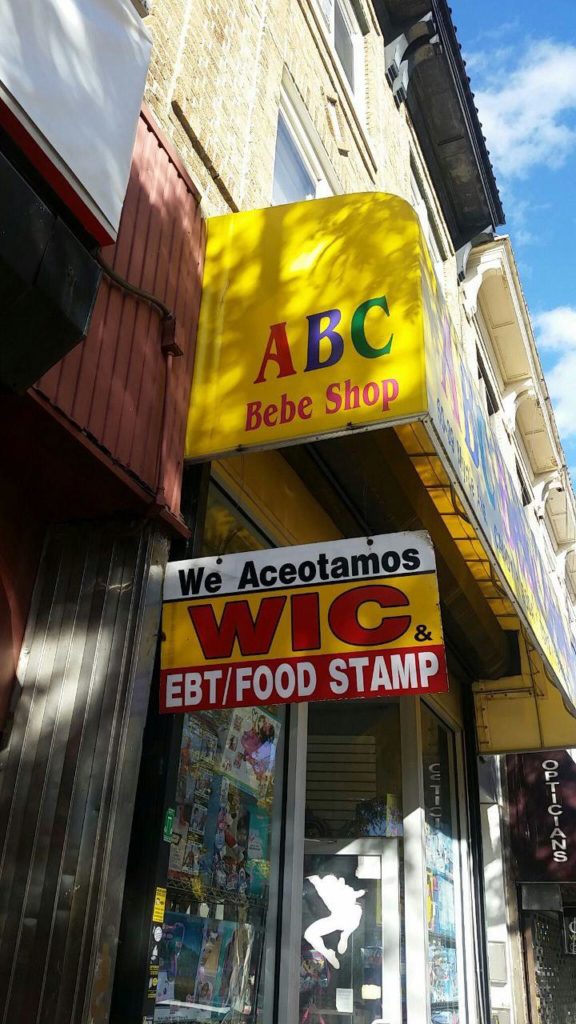
A seminal study by Landry and Bourhis (1997) defines a “linguistic landscape” this way:
“The language of public road signs, advertising billboards, street names, place names, commercial shop signs, and public signs on government buildings combines to form the linguistic landscape of a given territory, region, or urban agglomeration.” (25)
While limiting itself to only a few types of media, this definition captures the essence of a linguistic landscape—the geospatial organization of written text in our surroundings, or, according to Singh (2002), “organized intervention that adds to the functionality of a language” via written media available in a public space. Research focusing around linguistic landscapes generally improves the understanding of how this organization affects and reflects language practice, dominant and subordinate language groups, and the presentation of self or group identity within a speech community. Gorter (2013) gives an overview of the state of the field of “linguistic landscapes,” beginning with a review of past research and theoretical approaches, more current approaches and methodologies, and the future directions of the field.
Gorter cites anthologies such as that of Troyer (2012) to indicate that the field is rapidly growing and that it incorporates an extremely wide range of methodologies. Among the theoretical approaches listed are that of Jackendoff (1983), which relies on a “preference model”; Spolsky (2009), which incorporates linguistic landscapes more broadly into the field of language policy and planning, subcategorizing linguistic landscapes as a form of language practice; Shohamy (2006), which argues that language is used in signage as a tool to establish dominance of space; and Ben-Rafael (1998, 2006), which bases its model on four main sociological principles: signage as a form of presentation of the self, as the result of cost/benefit analysis, as a collective identity marker, and as an indicator of dominant/subordinate language groups.
More currently, research studying linguistic landscapes has incorporated a variety of methodologies both quantitative and qualitative, and is influenced by fields such as political science and geography. The field has been rapidly advanced through digital photograph collection, which has been used to exhaustively document signage in concentrated areas for in-depth analysis of the speech community it is sampled from. This quantitative methodology is frequently combined with qualitative measures such as interview data. A few studies that utilize a combination of these methodologies are Garvin (2010), a study that presented “postmodern walking tour interviews” in Memphis, TN to examine people’s responses to the linguistic landscapes around them in real time, and Mitchell (2010), which relied on a triangulation of discourse analysis from newspaper articles, recordings of languages spoken on the street, and photos of the linguistic landscapes in the studied community. Backhaus (2005) and multiple other researchers examine the historical use of signage in a single area, using a diachronic approach. Gorter adds that these multi-purpose approaches have enormous potential in revealing relationships between language, power, and individual and group identity found on signage throughout the world.
Backhaus (2003) is an example study cited by Gorter (2013) that examines multilingual signage in Tokyo as a reflection of power and solidarity. Backhaus describes Japan as a relatively ethnically homogenous country, with only 2.8% foreign-born residents even in its most urban areas; however, the country has a surprisingly diverse linguistic landscape. The study differentiates between “official” signs (set up governmental organizations, accounting for 25% of the total signs) and “unofficial” signs (other, 75% of the total sample) collected through digital photography from the Yamanote Line in Tokyo, providing a “multilayered” image of the city that incorporates business and shopping districts with parks and residential areas. This photographic data was then analyzed for its linguistic content, finding that about one-fifth of the signs contained non-Japanese linguistic material, mostly English, which is a high-prestige language in Japan. Similar to the models outlined in Gorter (2013), in analyzing its results the study uses a model by Spolsky and Cooper (1991) that identifies three main rules for signage use: write in a language you understand, write in a language the intended audience understands, and write in a language with which you intend to be identified. In keeping with the third rule of this model, Backhaus argues that the lack of translation available on unofficial signs is representative of solidarity with speakers of non-Japanese languages, while official signs tend to present languages more equitably, but with Japanese still clearly presented as the dominant language. In short, language usage on signage in Tokyo is cited as evidence of the spatial establishment of linguistic dominance and solidarity.

Heyd (2014) examines how this same negotiation of power through language takes place online via “folk-linguistic photo blogging as an example of twenty-first-century grassroots prescriptivism.” Heyd argues that these blogs are closely connected to the enregisterment of certain linguistic features as nonstandard or uneducated. According to Heyd, the language policing that takes place via this medium is unique in that its use of visual evidence of so-called nonstandard language use is particularly effective in spreading its message, giving users on the same platforms the ability to spread these rapidly within their own social networks and add metalinguistic commentary. However, Heyd draws an important distinction between “linguistic landscapes” and the “folk-linguistic landscapes” she studies: the former are the landscapes analyzed by linguists, while the latter is comprised of the photobloggers’ own analyses of the linguistic landscapes, which cause the digital enregisterment of the features they focus on. Heyd’s main point is that, through this same cataloguing of language use through digital photography, prescriptivism has taken a more “bottom-up” direction—involved in the same negotiation of dominant and subordinate language groups via more explicit means.
Finally, Jaworski & Thurlow (2010) analyzes the practice itself of using space to create meaning through language, chiefly concerned with the “discursive construction of place and the use of space as a semiotic resource in its own right,” and “the extent to which these mutual processes are in turn shaped by the economic and political reorderings of post-industrial or advanced capitalism, intense patterns of human mobility, the mediatization of social life, and transnational flows of information, ideas and ideologies.” Jaworski & Thurlow challenge the approaches of the above researchers by broadening the scope of their research beyond the geospatial use of language to encompass its interaction with nonverbal communication, architecture, etc. To the authors, linguistic landscapes are better defined as semiotic landscapes, and connecting space to meaning is fundamentally dialectic, involving an act of locating the self within space. The scope of this excerpt is therefore somewhat vast in comparison to the others. Importantly, however, the authors establish the concept of spatialization, or the means by which space becomes organized, experienced, conceptualized, and represented, offering a more in-depth analysis of the meaning-making processes at play in the other “linguistic landscape” authors’ more quantitative work.
One question that stayed with me as I read these articles is that of positionality, something we’ve occasionally touched on throughout the semester but that seems to become increasingly important as we examine fields that rely heavily on qualitative analysis. In the field of “linguistic landscapes,” how closely connected are the positionality of its researchers to the conclusions they draw about the communities studied?


